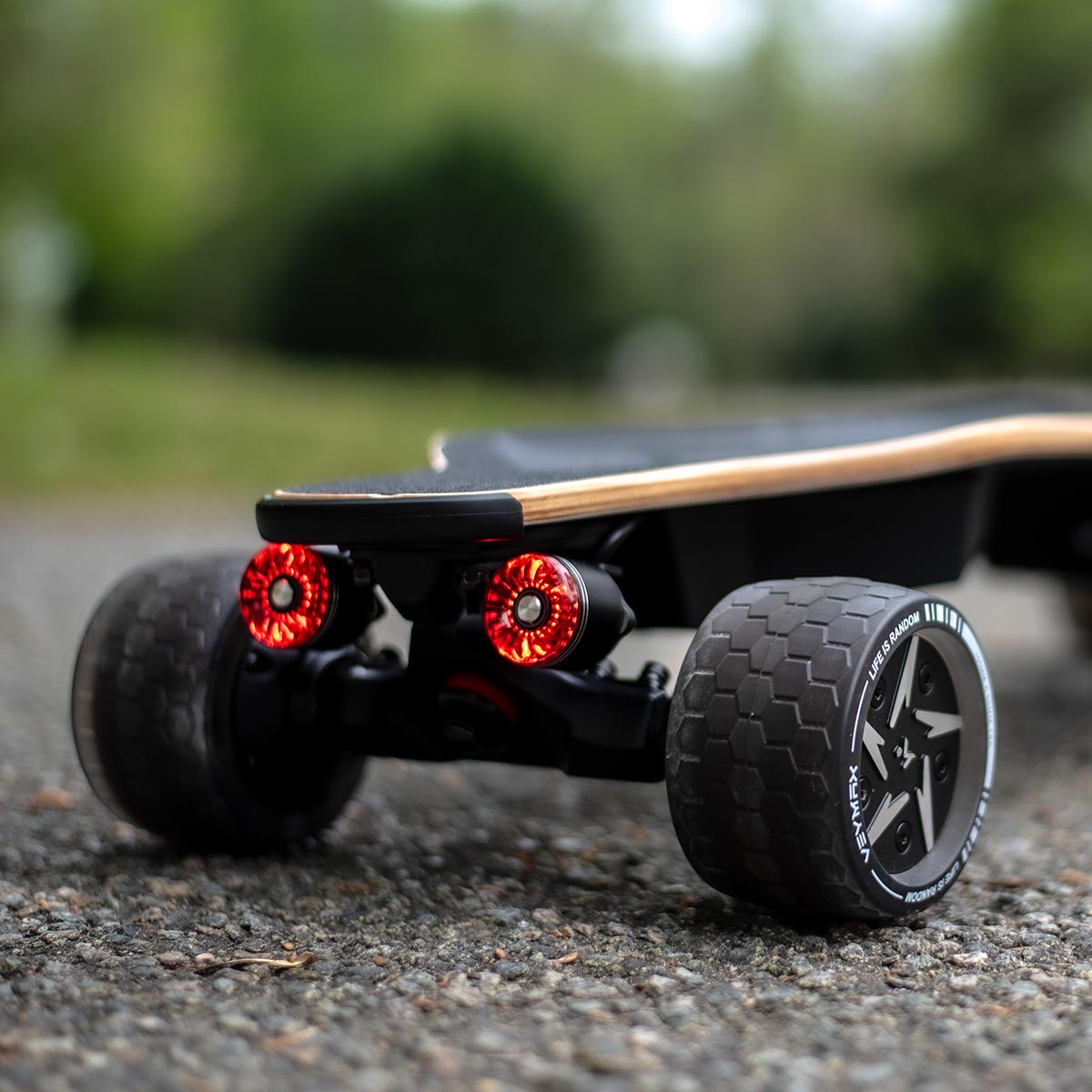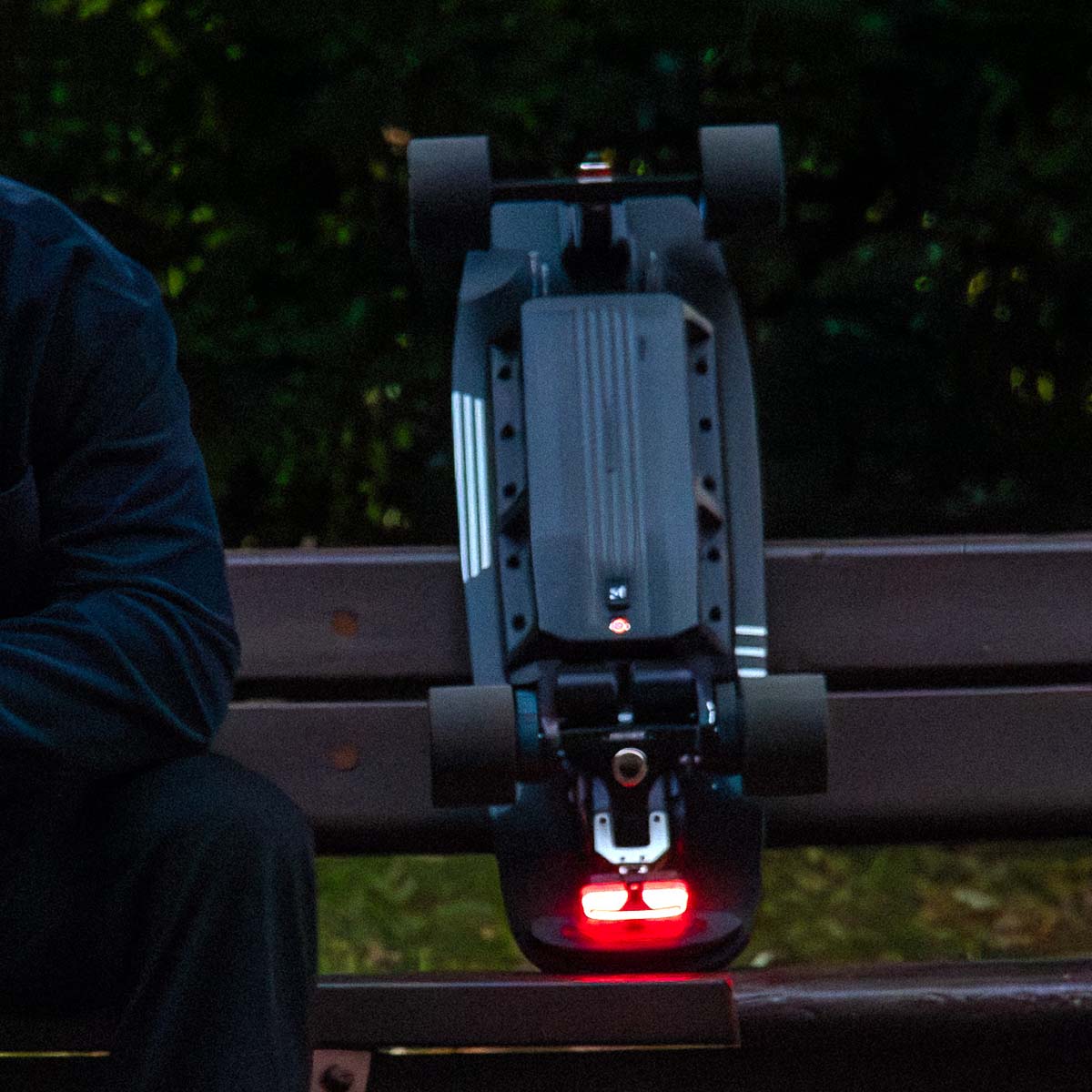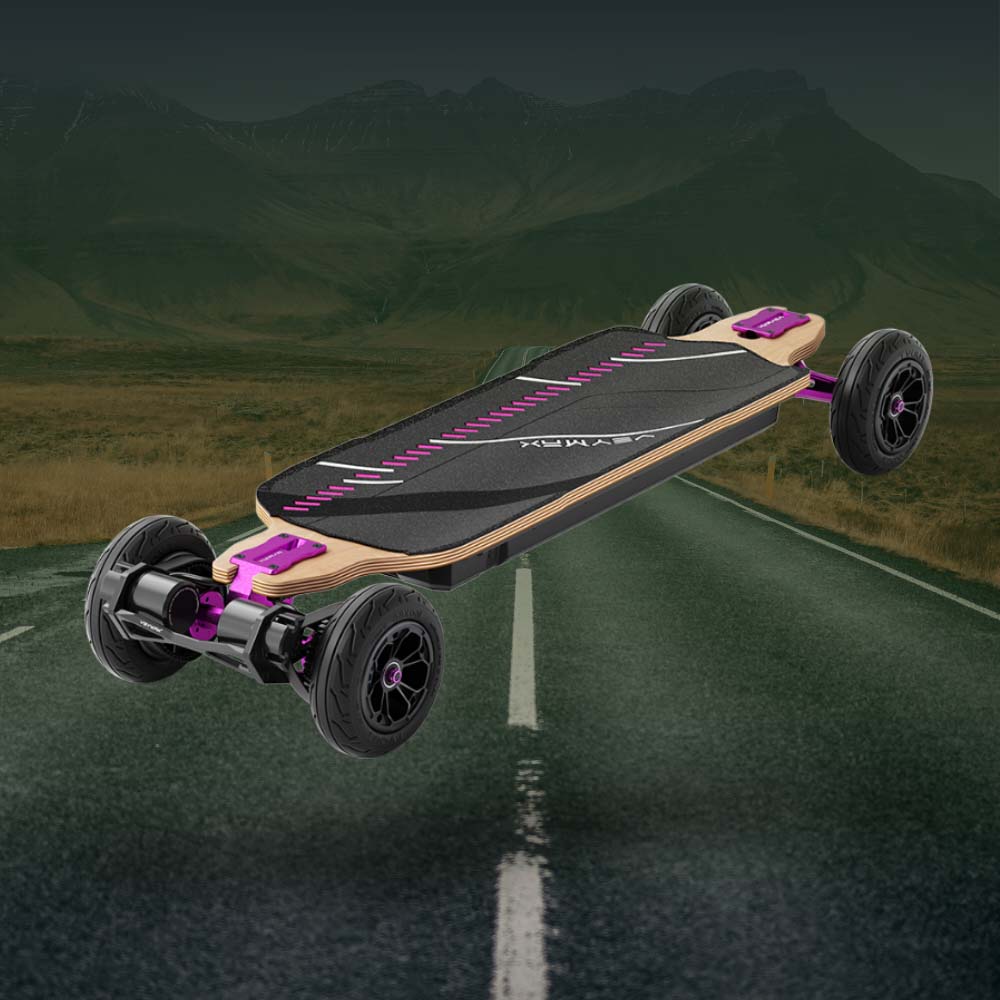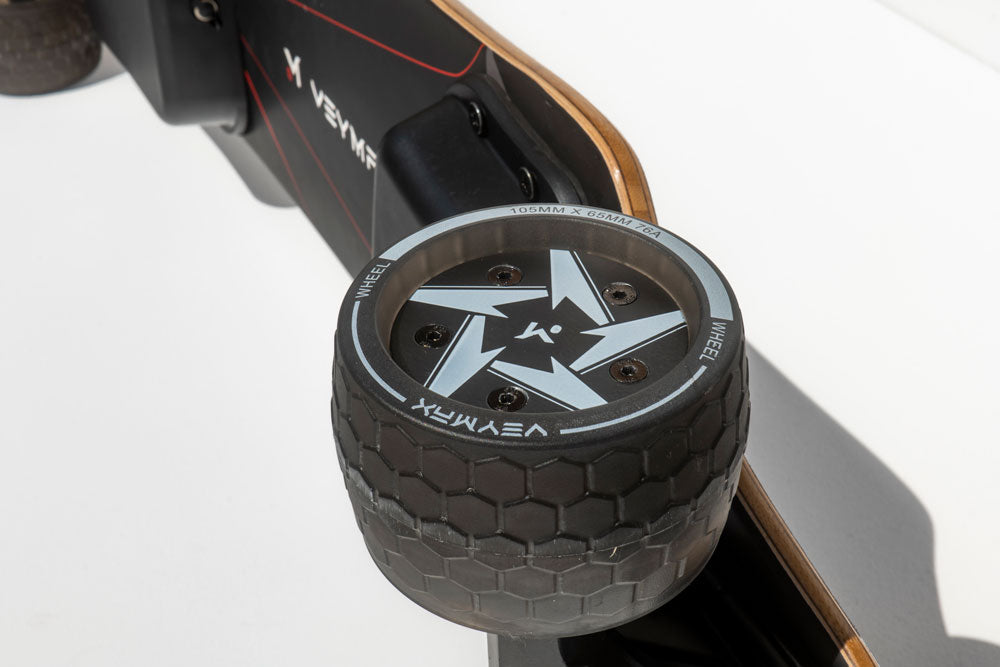As an Electric Skateboarder, there are a few things you should know about wheels. These wheels can improve or reduce the feel of your ride, either increasing your mileage, or being more strenuous and thus decreasing mileage. In case someone doesn't know enough about things, we've put together a complete guide to Motorized E-Skateboard wheels here to give you a solid helping hand.
In this article, we outline everything you need to know, from the importance of wheel size, and even highlight some of our personal favorites.
What types of E-Longboard wheels are there?
As far as E-Skateboard wheels are concerned, there are mainly two types of materials used – polyurethane and aerodynamic materials. These materials are very popular for a number of reasons, which explain why Motorized Longboard wheels are made of the same material.
Polyurethane wheels are considered by many to be OG wheels because they've been around since the 70's when a guy named Frank Nasworthy saw their potential on skateboards after watching a friend ride polyurethane bottom rollers. One of the best ways to easily think of these types of tires is to think of them as a type of hybrid tire. You see, polyurethane can bend however the manufacturer wishes, allowing them to use the same material to make all-terrain or off-road variants.
That being said, urethane wheels do have their drawbacks, especially when compared to pneumatic tires - which are different in a number of ways. Pneumatic tires are made of rubber and they also have an air tube inside which helps to add a certain amount of bounce to your board. All experts will tell you that air-filled tires are great for off-road and all-terrain because the air bubbles react to the ground as they move.
In my experience, air-filled tires also ensure a smoother ride, no matter what type of terrain you're under. Also, did you know that the air tube can be deflated or inflated, allowing you to customize your Electric Skateboard to your ride? In addition to distinguishing by material, the following three wheels are often compared and competed on the market.
1. 105mm Cloudwheels
We thought we'd start the list with a very famous brand of popular electric board wheels. Veymax has made a name for itself with a range of boarding products. Needless to say, their line of pulleys is better than most you'll find in the wild. Cloudwheels are no exception.
With a diameter of 105mm, Cloudwheels are one of the larger sized motorized wheels on the market, making them ideal for going fast and more. According to some skateboarders, Cloudwheels allow you to roll up curbs and forget about the tiny pebbles that used to make you chew tarmac. We trust them and just tried out these wheels a few weeks ago. It doesn't help with the durability/functionality of the wheel, but if your e-skate wheels are generally about looks, the transparent design does add to the appeal.
2. pneumatic tires
This option bridges the gap between mountain boards and longboards. The great thing about these skateboard wheels is that they grip even in the most extreme conditions (due to the wobbly tread design), allowing riders to take on any challenge the outdoors throws at them. They provide a smoother ride, better grip and cushioning. However, they can be more expensive and can be easily punctured if not maintained properly.
3. PU Wheels
The main features of Motorized E-Longboard PU wheels are durable, lightweight and affordable. They also provide good grip and increase speed. However, it also has disadvantages. Electric Skateboard PU wheels make noise when riding on rough terrain and are prone to wear and tear.
Simply put, skateboard wheels are the part of the skateboard that allows you to move and helps determine how fast you can go. Skateboard wheels are usually made of polyurethane and come in a variety of sizes, colors and durability levels to suit your skateboarding style and preference. Skateboard wheels are measured by diameter and durometer. The diameter is the size of the wheel and the durometer is the hardness of the wheel. Both of these factors are a matter of personal preference, and what you plan to do with your skateboard. Custom builds allow you to choose the best wheels to match your deck, truck and hardware.
All three wheels come in different sizes. Wheel diameter affects how quickly you accelerate and how hard you turn. Smaller wheels result in slower travel, while larger wheels result in faster travel. And because they're lower off the ground and generally easier to control, smaller wheels are great for technical or street skating. If you're a beginner or someone who uses your skateboard as your daily means of transportation, you'll want to switch to bigger wheels. Their increased diameter blends speed and balance, perfect for low-profile cruising or vertical skating.
In addition to size variations, skateboard wheels come in different shapes or cuts, including narrow or wide lip and cruise wheel shapes. If you're looking for a ride with less friction and weight, narrow lip wheels are the way to go, and can help you master your next trick because they're more responsive to fast movements. Conversely, beginners and commuters will be more likely to invest in cruiser wheels, as these tend to have the best grip and rounded outer lips. However, if you want an option that has the best of both worlds, consider the standard wide-lip wheels; while they're less geared toward speed than narrower models, they're strong and well-balanced, making them a great choice around the skate park. Or an asset to the average skater on the street.
Select skateboard wheel shape and contact surface
The contact surface is an important feature of skateboard wheel performance. The ground contact area of the wheel refers to the area of the wheel that actually contacts the road. If you have large longboard wheels, you will also have a large contact area. So why is contact patch important? If your contact area is large, your weight will be distributed over a larger area. This reduces the compression of the urethane in the wheel and reduces rolling resistance, which reduces wheel speed. Wheel shape also affects the size of the contact patch. Round wheels have less contact with the road, while square wheels have the most contact with the road. The placement of the contact surfaces can also affect wheel performance.






Leave a comment
This site is protected by hCaptcha and the hCaptcha Privacy Policy and Terms of Service apply.